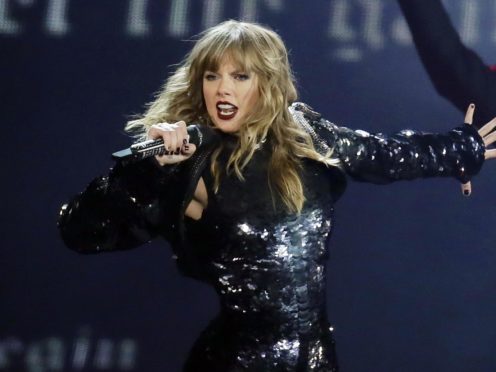Taylor Swift has accused Scooter Braun and Scott Borchetta of blocking her from performing her old music at an upcoming awards show.
Braun, a prominent talent manager, owns the rights to Swift’s first six albums after acquiring her former record label Big Machine, which was founded by Borchetta.
When the deal came to light in June, Swift said she was “sad” and “grossed out”, accusing Braun of being behind “incessant, manipulative bullying”.
Don’t know what else to do pic.twitter.com/1uBrXwviTS
— Taylor Swift (@taylorswift13) November 14, 2019
The row has been brought back into the public eye once again, following a passionate and lengthy statement from Swift.
Here is why they are arguing:
Braun owns Swift’s master recordings
Master recordings are the original recordings of an artist’s music, from which all the later copies are made.
The owner of these exerts control over the use of a song and earns money from it.
What happened with Swift’s?
Swift began her career at Big Machine, signing for the label when she was 15. She then became one of the biggest pop stars in the world until she left and signed for Universal Music Group in a highly publicised deal last year.
When Swift signed with Big Machine, which released her first six albums, she apparently also signed away the copyright to her master recordings.
This is standard practice in the music industry.
How did Braun come to own them?
A company fronted by Braun – Ithaca Holdings – bought Big Machine, and with it Swift’s master recordings.
The deal was worth 300 million US dollars, about £237 million.
Why didn’t Swift buy them herself?
This is disputed. Borchetta says he gave Swift “every chance in the world” to own her music, but instead she “chose to leave” the label.
However, Swift says she was only offered the chance to regain the rights to her music by signing another deal with Big Machine and “earning” an album back at a time.
She said: “I walked away because I knew once I signed that contract, Scott Borchetta would sell the label, thereby selling me and my future.”
What is the latest from Swift?
She will be named artist of the decade at the American Music Awards later this month and said she wanted to perform a medley of her songs at the ceremony. However, Swift alleges, Braun and Borchetta will not allow it.
In a fiery statement, she accused them of “exercising tyrannical control” over her career.
She added: “The message being sent to me is very clear. Basically, be a good little girl and shut up. Or you’ll be punished.”
Borchetta and Braun are yet to respond to Swift’s latest allegations.
